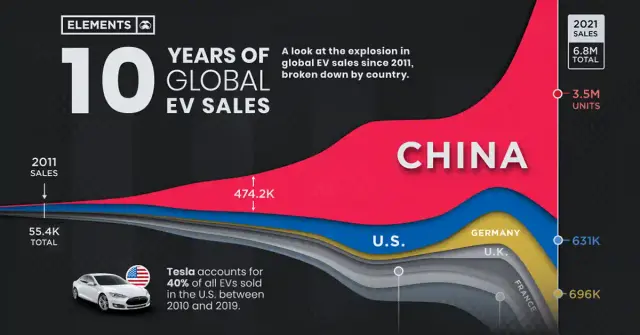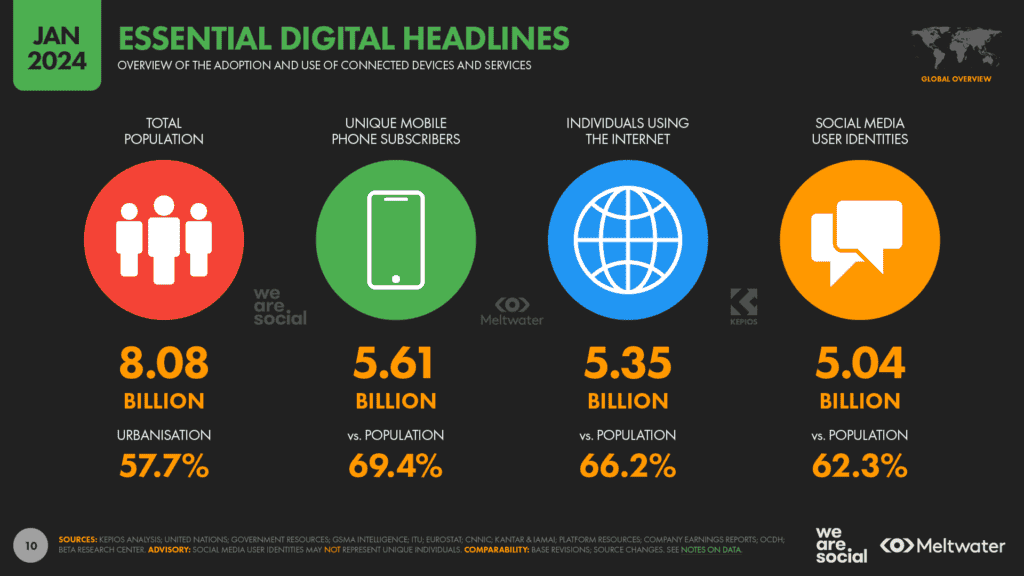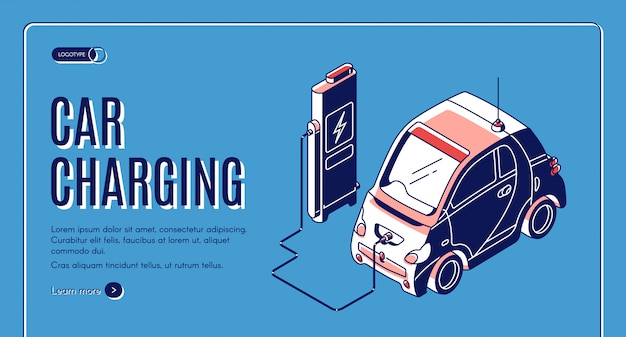The Explosive Growth of EV Models Worldwide
Mia Anderson

Photo: The Explosive Growth of EV Models Worldwide
The automotive industry has reached a turning point, with more electric vehicle (EV) models hitting the market than ever before. Across the globe, drivers are embracing the promise of efficient, zero-emission mobility. Governments, manufacturers, and consumers are uniting behind the concept of greener roads, resulting in a wave of investment and innovation that has changed the face of transportation. While concerns around charging infrastructure and range anxiety persist, the accelerating pace of research and development continues to break down these barriers.
This article offers insights into the factors fueling the explosive growth of EV models worldwide and examines how the shifting landscape could influence the future of mobility.
From Novelty to Mainstream
A few decades ago, electric vehicles were often seen as niche products suited mainly for environmentally conscious early adopters. Initial attempts at mass-market electric cars struggled with limited range, high costs, and sparse charging networks. Over time, however, the world witnessed a transformation. Early pioneers, such as the Nissan Leaf and Tesla Roadster, helped prove that EVs could be both practical and exciting.
EV Milestones That Shaped the Industry
- Increased Battery Efficiency: Improvements in lithium-ion technology enhanced driving range and lowered production costs.
- Growing Charging Networks: Governments and private enterprises invested heavily in charging stations, making EV ownership more viable.
- Awareness of Climate Change: Concerns about global warming intensified interest in zero-emission technologies, elevating demand for electric alternatives.
These milestones laid the groundwork for the explosion of new EV models, with major carmakers joining the race and releasing everything from compact sedans to luxury SUVs and commercial vehicles.
Key Drivers Behind the Surge in EV Models
1. Government Policies and Incentives
One of the strongest catalysts for the increasing number of EV offerings is the range of government policies designed to encourage their adoption. Many countries provide purchase subsidies, tax breaks, or rebates to reduce the cost of buying electric vehicles. Some regions have even set target dates to phase out internal combustion engine (ICE) cars. These policies motivate automotive manufacturers to fast-track EV research and development, and they encourage consumers to consider going electric.
Examples of Such Support Include:
- Tax Incentives: Reduced vehicle registration fees or exemptions from certain taxes.
- Infrastructure Funding: Grants to install public charging stations and upgrade energy grids.
- Regulatory Measures: Zero-emissions vehicle mandates that require automakers to sell a specified portion of electric models each year.
2. Advancements in Battery Technology
Battery technology developments serve as the backbone for this wave of EV growth. New chemistries and manufacturing methods significantly improve energy density, lowering costs while offering longer ranges. Notable breakthroughs include solid-state batteries, which promise higher energy storage capacity and faster charging times than conventional lithium-ion cells.
Reduced battery pack costs translate to more affordable vehicles, making them accessible to broader consumer segments. As prices continue to drop, experts predict that EVs could soon reach price parity with traditional cars. This factor alone is set to catapult electric vehicles further into mainstream consciousness.
3. Shifts in Consumer Perception
Public perception of electric vehicles has evolved notably. Early skepticism about reliability or convenience is waning, replaced by a focus on sustainability and technological innovation. Many new EV owners highlight the convenience of charging at home, bypassing routine visits to gas stations. Additionally, the rise of extended-range models addresses past worries about long-distance capability.
Manufacturers now aim to appeal to consumers through sleek design, high-tech infotainment systems, and performance advantages like instantaneous torque. These attributes allow EVs to compete not just on environmental merits, but also on driving experience, comfort, and style.
Analysis: Challenges and Considerations
1. Charging Infrastructure and Range Anxiety
Although charging networks have expanded significantly, many prospective buyers still worry about the availability of charging stations. Range anxiety is gradually diminishing, especially in urban areas, but rural and remote locations may lag in establishing the necessary infrastructure.
- Potential Solutions: Installing fast-charging stations at strategic points along highways and promoting standardized charging connectors to make cross-country travel more feasible.
2. Supply Chain Complexities
Building electric vehicles requires different components, particularly batteries, which rely on specific minerals and rare earth elements. This demand adds a layer of complexity to global supply chains. Issues such as material sourcing, ethical mining, and manufacturing capacity must be addressed to ensure a stable and responsible supply of key resources.
- Critical Thinking: Policymakers and manufacturers should consider long-term strategies to recycle or repurpose EV batteries, ensuring that valuable materials are reused and environmental impacts are minimized.
3. Cost and Consumer Adoption
While EV prices have dropped, some consumers still view these vehicles as more expensive than traditional cars. In certain markets, incentives help narrow the gap, but as governments gradually reduce subsidies, manufacturers face the challenge of maintaining affordability.
- Industry Response: Ongoing investments in research, economies of scale, and cost-saving production methods can help secure price competitiveness without relying heavily on subsidies.
4. Regional Disparities in Growth
Not all regions experience the same level of EV adoption. Countries in Europe and parts of Asia have embraced electric transportation faster than others due to robust infrastructure and strong policy frameworks. In contrast, many developing nations face hurdles such as insufficient charging stations, limited financing options, and weaker policy support.
- Observation: Bridging this gap will require collaboration between governments, private investors, and automakers. Targeted efforts could include partnerships to develop efficient infrastructure in emerging markets.
Future Outlook: An Evolving Automotive Landscape
The evolution of electric vehicles is far from complete. Despite the challenges, the collective momentum behind sustainable mobility continues to accelerate. In an effort to reduce carbon emissions, governments around the world are expanding clean energy production, reinforcing the viability of EVs in the broader energy ecosystem. Some automakers are even pledging to transition fully to electric lineups within the next few decades.
Potential Disruptors
- Innovation in Battery Technology: The emergence of solid-state batteries, or other innovative chemistries, may drastically cut charging times and increase range.
- Autonomous Driving Synergy: Pairing autonomous systems with electric powertrains could further reshape personal transportation, offering new opportunities for shared mobility services.
- Grid Integration: Smart charging solutions enable EVs to feed electricity back into the grid, contributing to energy stability and providing additional revenue streams for owners.
Conclusion: Powering a Cleaner Tomorrow
The explosive growth of EV models worldwide is a testament to how quickly an industry can pivot when environmental, economic, and technological forces align. Governments and consumers increasingly demand greener solutions, while automakers rise to the occasion with bold commitments and innovative designs. Yet, as the number of EV models expands, it is essential to address lingering challenges, from infrastructure gaps to ethical sourcing of battery materials.
By fostering collaborative partnerships, encouraging continued research, and supporting early adoption, the automotive sector can forge a future in which electric vehicles become the standard rather than the exception. Whether through stronger policies, advanced battery breakthroughs, or shifts in public perception, the transition to electric mobility is set to reshape transportation for generations to come, guiding the world toward a cleaner, more sustainable tomorrow.
Marketing
View All
January 23, 2025
Social Media in Digital Marketing 2024Learn how social media is revolutionizing digital marketing in 2024. Boost your brand with actionable tips for viral campaigns!
Mia Anderson

January 27, 2025
PPC vs SEO: Digital Marketing ShowdownDiscover the differences between PPC and SEO in digital marketing. Find out which strategy is right for your goals and budget. Make an informed choice today!
Mia Anderson

January 22, 2025
The Future of Digital Marketing RevealedExplore where digital marketing is headed in the next decade. From AI to VR, see what’s shaping the future of online marketing. Don’t get left behind!
Mia Anderson
Entertainment
View AllExplore the intriguing past of streaming services and take a look at what's coming next. Discover how streaming transformed media, from the period of tape drives to the present on-demand entertainment era.
Mia Anderson
Discover the latest tips for creating a top fan website in 2024. Learn key strategies and boost your site’s success click to read the complete guide now!
Mia Anderson
Ready to launch your music career in 2024? Discover essential strategies, from branding to income streams, and start your journey today! Click to learn more.
Mia Anderson
Discover the best video editing software for 2024. Our expert picks will help you choose the perfect tool for your needs. Click to find out more.
Mia Anderson
Automotive
View AllDiscover the transformative role of wireless charging in EV trends and its impact on convenience, efficiency, and adoption.
Read MoreDiscover real-world experiences of long-distance EV travel. Learn how EV owners tackle range anxiety and plan road trips.
Read MoreLearn about the challenges of recycling and disposing of EV batteries. How can we create sustainable solutions?
Read MorePolular🔥
View All
1
2
4
5
6
7
8
9
10
Technology
View All
December 21, 2024
Why You Need These 5 Essential Tech Gadgets for Your Home Office
Transform your home office with these must-have gadgets! Click to learn why they're essential and create the ultimate workspace.

November 7, 2024
The Pros and Cons of the Latest Wearable Tech
Thinking about wearable tech? Discover the latest pros and cons to help you decide. Make an informed choice today!

August 10, 2024
Top Apps to Supercharge Your Remote Work
With these essential apps, your remote job will be enhanced! Find out which tools are best for teams and remote workers to increase efficiency, productivity, and collaboration.
Tips & Trick






















